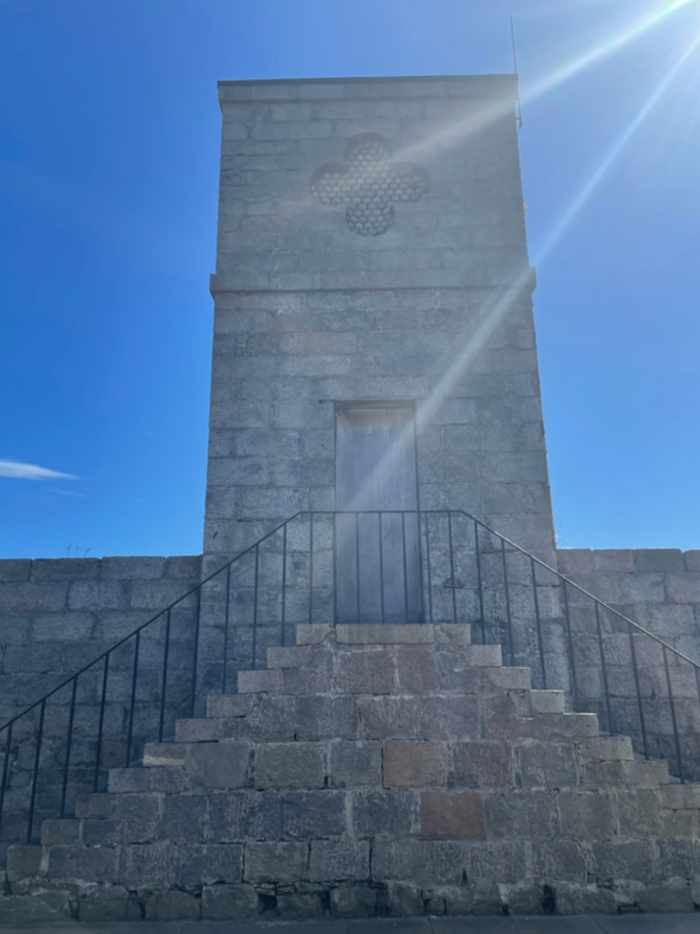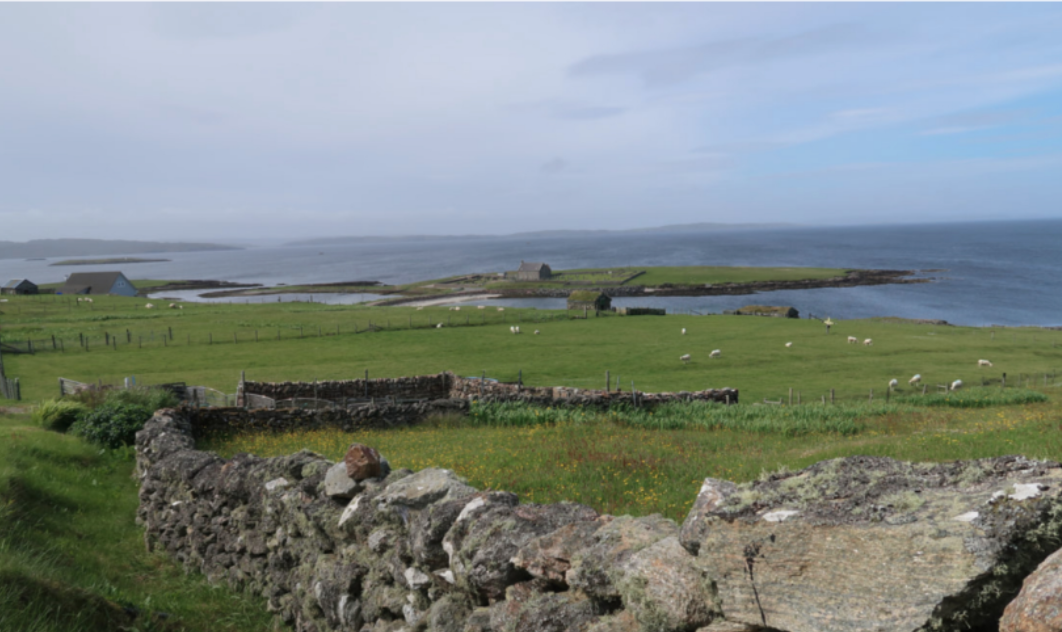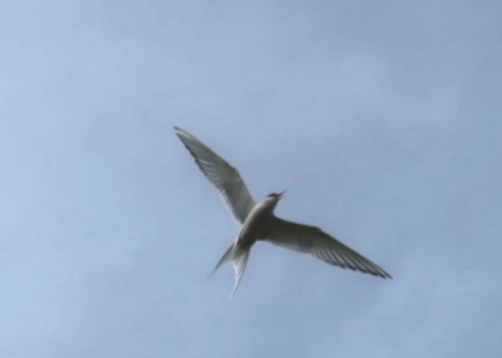A day in Whalsay with the Heritage Centre and friends
Symbister Harbour, Whalsay
Every great adventure starts with a boat, surely? It certainly feels like that as you dart north, rushing to make the ferry on time, watching the clock anxiously and praying you don't meet a tractor en route.
The Whalsay ferry has an altogether different feel to the North Isles ferries; the journey is longer, and booking is strongly recommended if you want to ensure you arrive – and depart – on the ferry you've chosen. It also has a more 'Shetland' feel, as locals make up the bulk of the people who use the ferry.
The island, in many ways, feels removed from the hustle and bustle of the tourist trail that can make much of Mainland Shetland feel like an adventure playground for busy holidaymakers. Accommodation options are limited and the island is often overlooked in marketing material relating to Shetland.
The MV Hendra, the Whalsay ferry that makes the 25-minute crossing from Laxo
We'd chosen a bright and breezy June day to visit, and despite the freshening breeze, the 25-minute ferry across was calm. Once we arrived on the 'Boanny Isle' as it's endearingly known, we were reminded that the sun always shines in Whalsay.
We'd come across from the mainland primarily to visit the new displays at the Whalsay Heritage Centre, tucked away in the old stable and farm buildings behind the impressive Georgian manor house that now houses the island's secondary school.
Whalsay Heritage Centre
Volunteers Susan and David welcomed us to The Heritage Centre. They invited us for a cup of tea, a yarn, and the opportunity to look through the displays and extensive archive of old photos the centre holds.
Whalsay is a tight-knit community of around 1,000 – a number that has remained unchanged over the years as the island enjoys relative prosperity brought in by the nets of the local fishing fleet, comprising eight pelagic boats and a handful of whitefish and other inshore vessels.
Symbister Harbour, Whalsay with a packed marina filled with pleasure boats and inshore fishing boats
Arriving in Symbister Harbour feels like 'proper Shetland', without the frills and gloss we often put on to impress our visitors. Whalsay is authentically and proudly Shetland. It's a welcoming place with a traditional fishing vibe that has otherwise been lost to the rest of Shetland, other than Burra.
It's a beautiful, chaotic and colourful harbour with everything from small two-oared punts to the great pelagic super trawlers of over 80 metres in length – and everything in between. Creels and pickups line the pier, and the regular ferry activity means the harbour is never silent. Symbister House dominates the port, looking down on the community from the heights of the surrounding hill. Built in 1823, the house was home to the lairds who ruled over the island and its inhabitants.
Symbister House dominates the skyline from the harbour
The Heritage Centre is the community's heritage hub, a veritable treasure trove of trinkets, treasures and all the accumulated stories and artefacts of life from over 5,000 years of habitation on the island. Housed in the farm buildings that once served the imposing Symbister House, the stone-built stables, byres and smithy now house the Centre and its extensive collections.
Extensive collections at Whalsay Heritage Centre cover all aspects of life in the island over the years
Symbister House and the surrounding buildings were built by the island's Bruce lairds. The lairds first came to the island in 1572, but the haa, or Symbister House, wasn't started until around 1820. Stone was built from Stavaness on the Shetland Mainland, and in the courtyard's centre, a three-storey building housed the laird's high-level toilet!
The laird's toilet - talk about a poo with a view!
The doors of the Heritage Centre opened in 2006, and, over the years, the volunteers who keep the Centre running have seen a succession of popular exhibitions. Susan tells me that, building on the success of the popular Fair Isle knitting exhibition, they decided to put on a lace show – telling the story of the island's lace heritage.
The 2022 lace exhibition at the Whalsay Heritage Centre - well worth visiting
As with communities across Shetland, there's a rich textile tradition, with girls learning the skills of their mothers and grandmothers before them at a young age. Evidence of this knitting heritage is thoughtfully displayed in one half of the centre, with lace garments proudly festooned across walls, tables, mannequins and stands; each one a delicate and colourful tribute to the island's creativity and design.
The Centre's fishing display is a permanent exhibition documenting the growth and changes in the fishing industry over the years. For an island so dependent on fishing, it would seem counterintuitive not to celebrate and mark it.
As well as the collection of artefacts and fishing paraphernalia, each boat has a dedicated folder stuffed with historic photos and information tracking the history – and the family – through the generations.
Whalsay's fishing display is part of the Centre's permanent exhibition
All Whalsay's boats are family-owned, with fathers handing the reigns to sons in an ever-continuing cycle that's as predictable and familiar as the tides that ebb and flow twice daily.
After watching a wedding film from the 1960s and hearing all about Whalsay's still strong traditions associated with island weddings, we went on a tour of the isle with Donna Polson who was kind enough to volunteer as our guide for the day.
Views from the south end of Whalsay at Clett. Note the access marker on the fence post matking one of the island's access routes for walking.
Whalsay is about 7.5 square miles in size, and the road does a circle of the island, meaning that it's very difficult actually to take a wrong turn!
Skaw is the northerly point of the island, and home to a challenging 18-hole golf course with spectacular views and the claim of being the UK's most northerly golf course.
This 18-hole course, which visitors are welcome to play, is bordered by the sea on each side and offers unparalleled views and an abundance of wildlife. This is a very exposed moorland course with spectacular clifftop scenery. However, if the wind picks up – as is often the case in Shetland – you can face some rather tricky shots from the tees. All in all, this is a great experience and one unlike any other and, even if you’re not a golfer, you will enjoy walking this course and enjoying the sights and sounds of the coastal peninsula.
A beautiful beach at the Golf Course - if golf aint your thing!
We also visited the beautiful Whalsay Kirk and graveyard. The kirk is one of 20 churches in Shetland that are earmarked to be sold by the Church of Scotland in Shetland. The surrounding cemetery – not part of the sale – contains the island's two war memorials to remember the fallen servicemen of Whalsay who gave their lives for king and country in the First and Second World Wars.
Whalsay Parish Kirk, Church of Scotland. One of 20 kirks that the Church is selling off in Shetland
A gang of noisy and aggresive terns put paid to any plans we had for a walk in the area!
We had planned a pleasant stroll along the only sandy beach in Whalsay, but the tirricks (Arctic terns) had other ideas, so we left them to their young and made our way back towards Symbister, where we parked in the quarry and walked the coastline back towards Clett.
I could live here!
Along the way back to Clett, passing the power cables that feed the island with electricity from the mainland and a 19th-century otter house, used for trapping and slaughtering otters for their fine pelts.
A 19th-century otter house used in the past for trapping otters for their pelts which were sold for profit
From Clett, views down Shetland's east coast towards Bressay and Noss rounded off the most perfect of summer days.
Our visit to Whalsay was brief, but the hospitality and generosity of time and information shared with us – as well as Donna's husband's delicious tomato soup – has made me long to return soon, hopefully, next time, for longer!
I came away from the day feeling proud of how much of Shetland's culture and language still stands strong in Whalsay and furnished with a new book for my collection – Whalsay Fair Isle Knitting Through the Decades(available to buy in the Heritage Centre for £10).
Donna and Kirsten - fantastic companions for the day!
Other things to do in Whalsay:
Whalsay's Hanseatic Bod. Key available from the shop.
Visit the Hanseatic Böd
One of the first things that you’ll spot as you leave the ferry at Symbister is the small stone-built booth or böd, as it is known locally. This building was used as a trading booth by Hanseatic merchants who came to Shetland from ports such as Hamburg, Bremen and Lübeck to trade stockfish – dried whitefish such as ling and cod. For about 500 years the Hanseatic League and German merchants were Shetland’s main trading partners. The Böd in Whalsay was renovated in 1984 and now houses a small interpretative centre detailing the history of the Hanseatic League and German merchants in Shetland over the years.
Whalsay has long been an important fishing community. Spend a little time at Symbister Harbour and look at the variety of boats still fishing from the isle today, from the huge supertrawlers to the small, wooden, inshore creel boats.
Visit the Beenie Hoose
Whalsay has been inhabited since Neolithic times, and evidence of the first farmers can be seen at Yoxie and the Beenie Hoose at Pettigarth’s Field. These Neolithic stone remains sit on Whalsay’s east coast and were excavated in the 1950s. The first farmers to Shetland arrived between 4,000 and 5,000 years ago. The introduction of agriculture and farming characterises this period. Much of Shetland’s prehistoric Neolithic landscape can be mapped and traced back by the evidence they left behind in the form of field boundary systems that still course through the hills like veins, offering a tantalising glimpse into the lives of our first settlers.
Look for wildlife
The Viking settlers called Whalsay the whale island, probably due to its profile on the horizon. With an abundance of outlying rocks and tidal sounds, Whalsay is a fantastic place to look out for seals, otters, and, if you’re lucky, porpoises, minke whales or orca. Shetland’s otter population feed on the coastal fringes, and although they’re not sea otters, they are more than at home along the salty coastlines of Shetland’s islands’.
Special thanks to the staff and volunteers at Whalsay Heritage Centre, particularly Susan Pearson and David Williamson, to Donna for the company and hospitality – and Larry for the soup – and to Dodie and Betty Williamson for giving us a sneak peek at the Auld Manse soon to open as a café and accommodation in the island.
Whalsay Heritage Centre is open Wednesday to Saturday 2-5 pm from May to September, or by prior arrangement (admission £3).
Until next time,





















